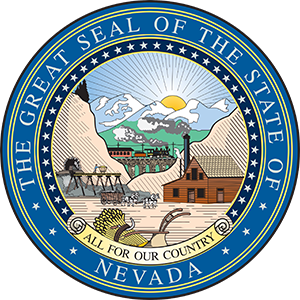Four Basic Preparedness Steps
- Be Informed - Learn what protective measures to take before, during and after an emergency.
- Make an Emergency Communications Plan.pdf - Create an emergency communication plan, you may not be with your loved ones when a disaster strikes.
- Emergency Supply Checklist - Assemble a disaster supply kit by collecting basic items your household may need to survive on during an emergency.
- Get Involved - Participate in community programs and activities to make families, homes and communities safer from risks and threats.
Easy Preparedness Tips...Are you Ready?
- Emergency Supply Checklist.pdf
- Emergency Communications Plan - Fillable Form.pdf
- Food to Include in Your Safety Kit
- Emergency Alerts
- Access and Functional Needs
- Preparedness Tips
- Kids Preparedness & Safety
- A Child's Reaction to Disaster by Age
- Pet Supply Checklist.pdf
- Pets and Large Animal Care During a Disaster
- Planning for Older Adults
- Nevada Tribal Emergency Coordinating Council / Tribal Affairs
- Preparedness Planning for Business
- Emergency and Natural Disaster Organizations
- Planee anticipadamente para los desastres
- Plan Ahead Nevada
Plan Ahead Nevada Guide
The Nevada Division of Emergency Management has developed this comprehensive guide to provide Nevadans with information, helpful tips, checklists and techniques on preparing your family, friends and pets for all emergency conditions.
Preparing before an emergency incident plays a vital role in ensuring that everyone in your household, employers and workers have the necessary equipment, know where to go, and know how to keep themselves safe when an emergency occurs. This guide provides information on how to prepare and train for emergencies and the hazards to be aware of when an emergency occurs.
- Plan Ahead Nevada Guide.pdf
- Plan Ahead Nevada Guide - Audio Version
Threats and Hazards
The Threat and Hazard Identification and Risk Assessment (THIRA) process helps communities identify capability targets and resource requirements necessary to address anticipated and unanticipated risks.
Disaster Categories Identified
- Attacks in Crowded and Public Spaces - Active Shooter
- Avalanche Disaster
- Bioterrorism - Biohazard Exposure / Attack
- Chemicals and Hazardous Materials Incidents
- Cybersecurity
- Drought
- Earthquakes
- Explosions
- Extreme Heat
- Flood Information
- Landslides and Debris Flow
- Nuclear Blast
- Pandemic
- Power Outages
- Radiation Emergencies
- Radiological Dispersion Devices
- Space Weather Phenomena
- Thunderstorms and Lightning
- Tornadoes
- Wildland Fire
- Winter Weather
Access and Functional Needs
Access and Functional Needs (AFN) refers to individuals with and without disabilities, who may need additional assistance because of any condition. That may limit their ability to act in an emergency.
Nevada 211
Nevada 211 is a special phone number reserved to provide information and referrals to health, human and social service organizations. Dialing 2-1-1 in almost every part of the United States will connect you to human and social services for your area. Services included in 2-1-1 are: places to find emergency food, housing and emergency shelter locations, children’s services, support for seniors, and people with disabilities, and mental health and counseling services, among many others. Nevada 2-1-1 is committed to helping Nevadans connect with the services they need.
Neighborhood Watch Programs
The National Neighborhood Watch program empowers citizens to become active in community efforts through participation in Neighborhood Watch groups. Neighborhood Watch programs help keep neighborhoods and communities safe. Starting your own crime prevention program—or reviving one that’s already been started in your neighborhood—can reduce crime in your area and give you a greater sense of security, and can even help improve your property’s value.
National Preparedness Month Information
National Preparedness Month (NPM) is recognized each September to promote family and community disaster planning now and throughout the year. As our nation continues to respond to various disasters and emergencies, there is no better time to be involved this September.
Developing and Maintaining Emergency Operations Plans
Comprehensive Preparedness Guide (CPG) 101 provides guidance for developing emergency operations plans. It promotes a common understanding of the fundamentals of risk-informed planning and decision making to help planners examine a hazard or threat and produce integrated, coordinated, and synchronized plans.
Kid's Corner
The resources available on this page provides children, parents and teachers with educational information, games and videos for kids to develop awareness and skills with all aspects of preparedness and safety.
- Kid's Corner
